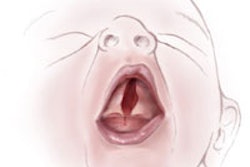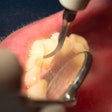
Each year, thousands of babies are born in the U.S. with craniofacial defects, from cleft lips and palates to more severe abnormalities of the face or head. Now, new discoveries in chicken genetics and biology are shedding light on the basis of these abnormalities in both humans and birds, according to a new study in the journal Development (August 2014, Vol. 141, pp. 3003-3012).
The work, by a team including University of California, Davis (UC Davis) animal science professor Mary E. Delany, PhD, was made possible by information from the chicken genome sequence and a stock of rare chicken lines kept at UC Davis.
 Mary E. Delany, PhD.
Mary E. Delany, PhD.The researchers focused on a mutation of the gene named talpid2, known to be associated with a number of congenital abnormalities, including limb malformations and cleft lip or palate.
They found that talpid2 -- like other limb and craniofacial mutations found in both humans and chickens -- is related to the malfunction of cilia, the tiny, hair-like structures on the surface of cells of the body.
"Now that this new information is available, the talpid2 mutation can be expanded as a model for studying similar congenital abnormalities in humans including oral-facial defects, which affect many people around the world," Delany said in a statement. She also serves as executive associate dean of the College of Agricultural and Environmental Sciences.
Cilia play a vital role in passing along signals during development. When a gene mutation interferes with the normal structure and function of the cilia, it sets off a chain reaction of molecular miscues that result in physical abnormalities, in chickens or people.
Rare chicken genetics
The specialized genetic line of chickens used for this study is a member of a group of unique avian genetic resources maintained for decades by UC Davis.
"These lines are maintained for their value in carrying out studies by UC Davis researchers and the community of researchers in the U.S. and internationally who study developmental biology in higher organisms," Delany said. "The chicken offers researchers unique advantages because the embryo develops in the egg, and all stages of development are available for analysis."
She noted that, for the research team, the findings are particularly meaningful as they are being published during the 10th anniversary of the initial sequencing of the chicken genome.
"The National Institutes of Health (NIH) and the U.S. Department of Agriculture (USDA) embarked on a partnership to fund sequencing of the chicken genome precisely because of the value of the chicken as a model organism for studying human health and its significance around the world as a source of food protein in the form of eggs and meat," Delany said.
"This is a terrific example of the aspirational intention of the USDA and NIH sequencing partnership," she said.
Funding for the study was provided by the NIH, the Cincinnati Children's Research Foundation, the John and Joan Fiddyment Endowment, and the National Institute of Food and Agriculture through the National Animal Genome Research Support Program.



















